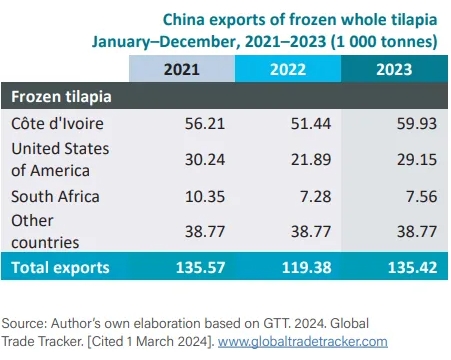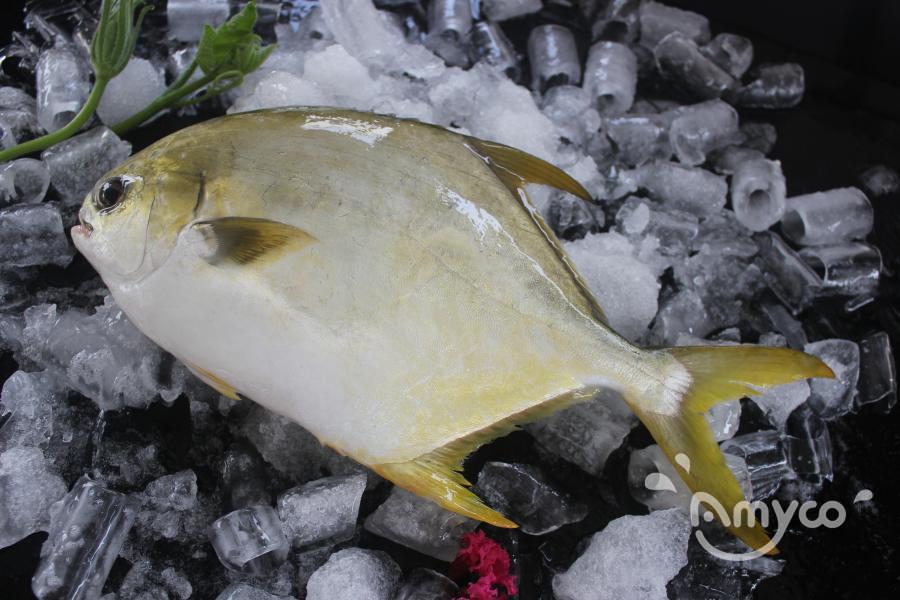China's tilapia exports increased by 47.4%.
In 2023, the global tilapia market is in a state of volatility, which reflects the ongoing changes in market demand and industry, which are also affecting the overall supply and trade market for tilapia. However, global tilapia production remained stable overall, indicating a resilient supply and demand market and potential recovery momentum for the tilapia industry in 2024.

China's tilapia industry is facing production supply challenges, affecting processing and exports. One of the main reasons for this situation is that, due to the impact of El Nino, China's total imports of fishmeal from Peru in 2023 fell by more than 50% to only 430,202 tons, and the resulting shortage of feed raw materials affected China's tilapia production, because China's tilapia feed production is more dependent on Peruvian fishmeal.
The cold weather in Hainan and Guangdong in 2023 also disrupted tilapia farming, directly affecting the supply of tilapia raw materials until 2024.
In addition, China's tilapia industry has had to deal with the introduction of an aquaculture licensing system, which means that tilapia farms must adhere to strict environmental standards. While this shows that people are paying more attention to environmental protection, regulations under the new system, including the treatment of farmed water before discharge, have further increased the cost of farming for Chinese farmers.

Market and trade: The total volume and total value of imports in the US market declined; European market export cost increase!
In 2023, China exported a total of about 110,000 tons of whole tilapia, up 47.4 % from 74,800 tons in 2022. However, the average export price decreased from $2.2 /KG in 2022 to $1.8 /KG in 2023. Similarly, frozen tilapia fillets exports totaled about 25,600 tons in 2023 (about 27,200 tons in 2022) at an average price of $3.1 /KG, down from $3.8 /KG in 2022. Despite the recent slight increase in Chinese tilapia export prices, the overall market is expected to remain stable through May-June 2024.
Due to declining production and rising costs, total U.S. tilapia imports in 2023 is 169,700 tons, with total imports of $634 million. Compared with 2022, total imports decreased by 6.8% and total imports decreased by 15.5%. Although China remained the largest supplier, supplying approximately 113,300 tons to the US market, totaling approximately $318 million, it declined in both volume and value (down 2.7% and 21%, respectively).
The European Union has implemented new autonomous tariff quotas that allow certain seafood products to be exempted from import duties. While these autonomous tariff quotas are designed to discourage imports of Russian aquatic products, they also objectively affect tilapia imports. With only 10,000 tonnes of tilapia ATQ, exports of tilapia above this quota increase the cost of trade and could lead to a change in whitefish sourcing strategy - from tilapia to Basa.

Total Chinese tilapia production in 2024 may be affected by the shortage of feed fishmeal in Peru. In addition, Chinese tilapia farms need to comply with new environmental standards, and these compliance efforts demonstrate an ongoing commitment to global competitiveness. Although the price of tilapia in China continues to increase, there may be differences in the price of tilapia in different regions within Brazil, another major producing region. South America faces disease challenges in 2023, but production is expected to rebound in 2024 with a more positive market outlook. In addition, African countries will continue to drive increased local demand for tilapia.
Reference : Globefish/FAO





